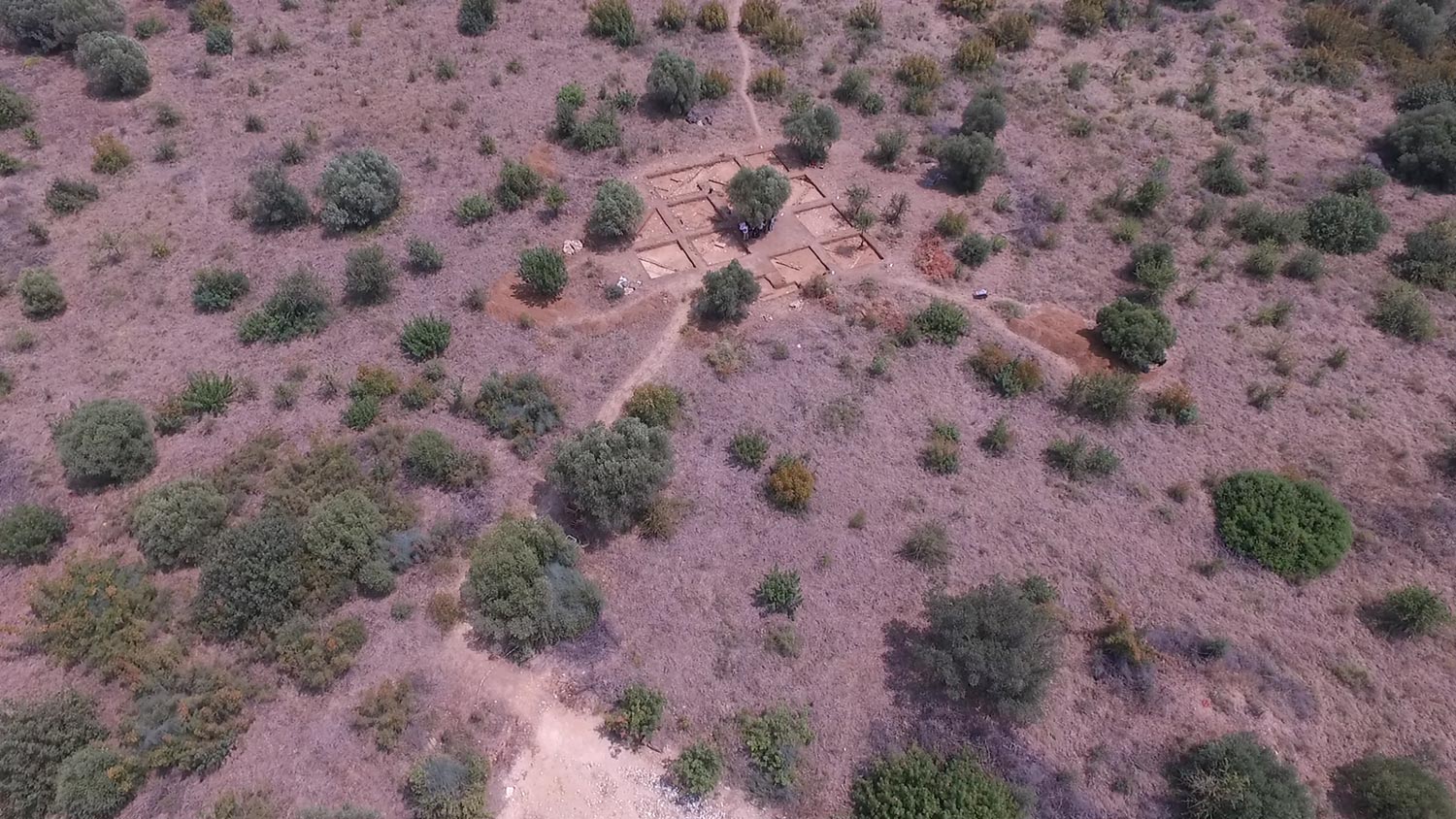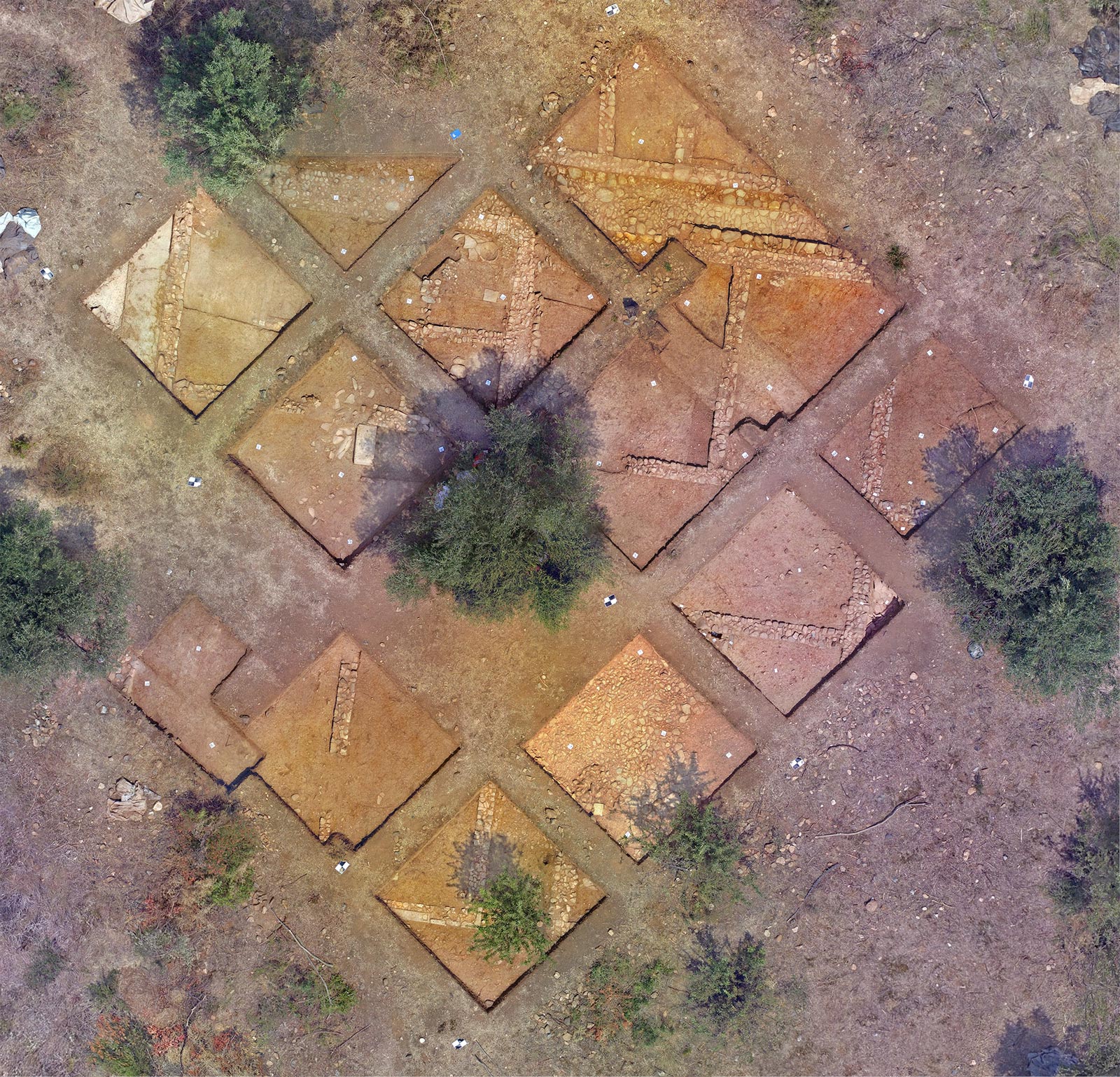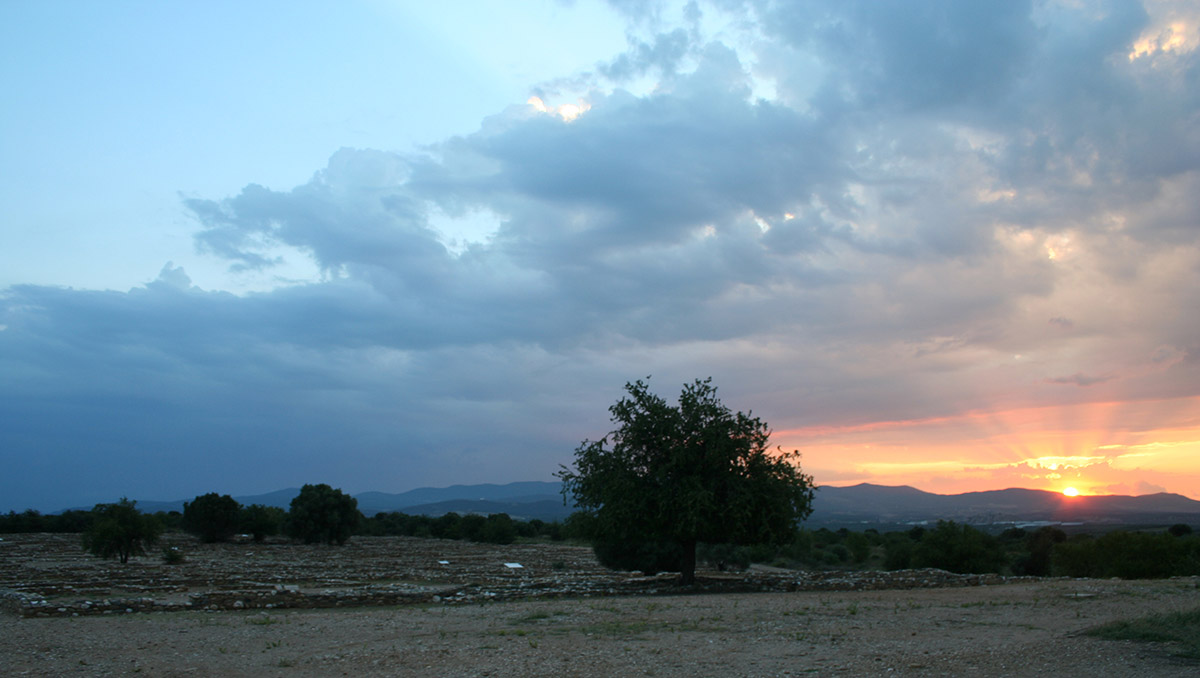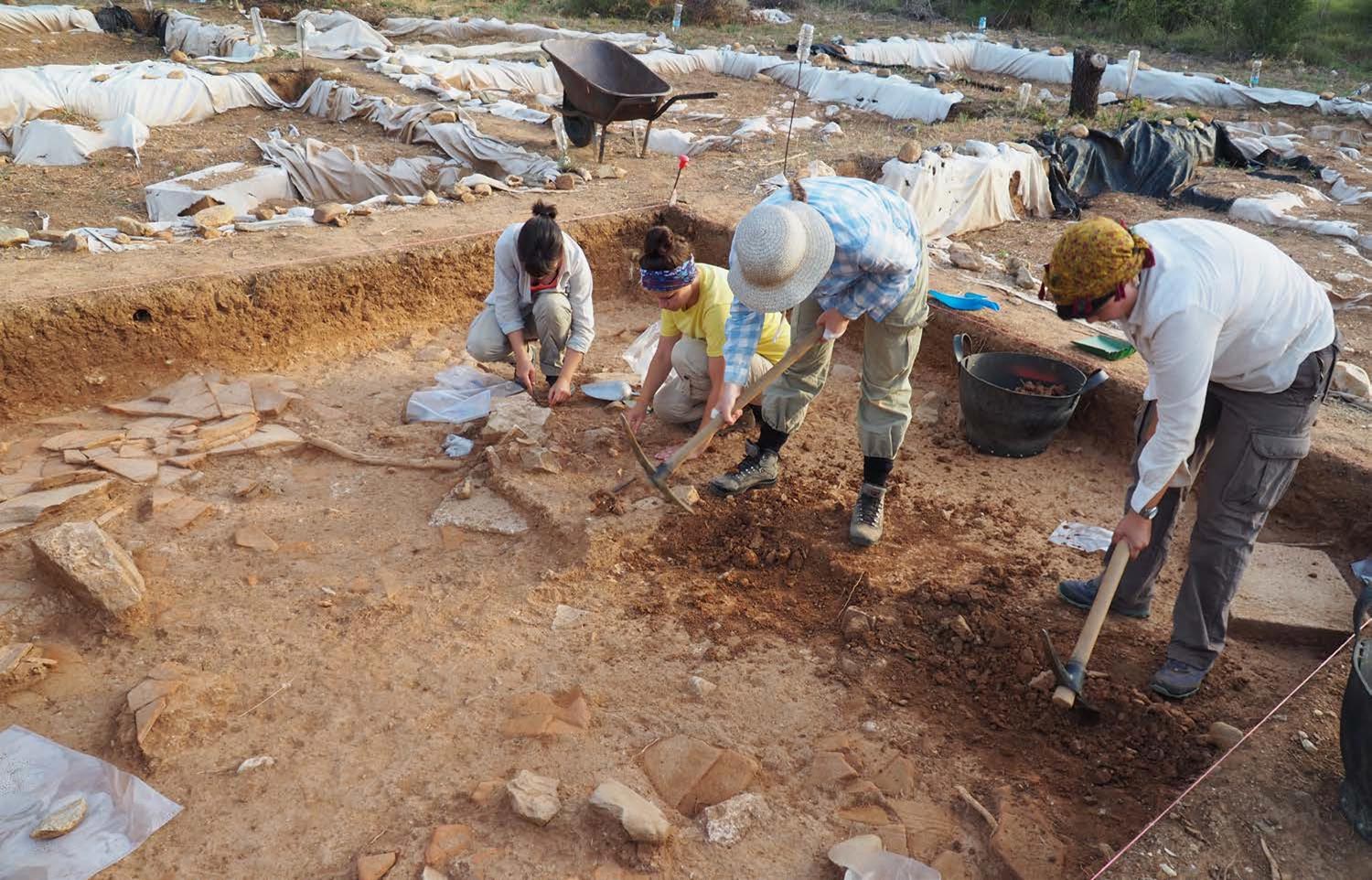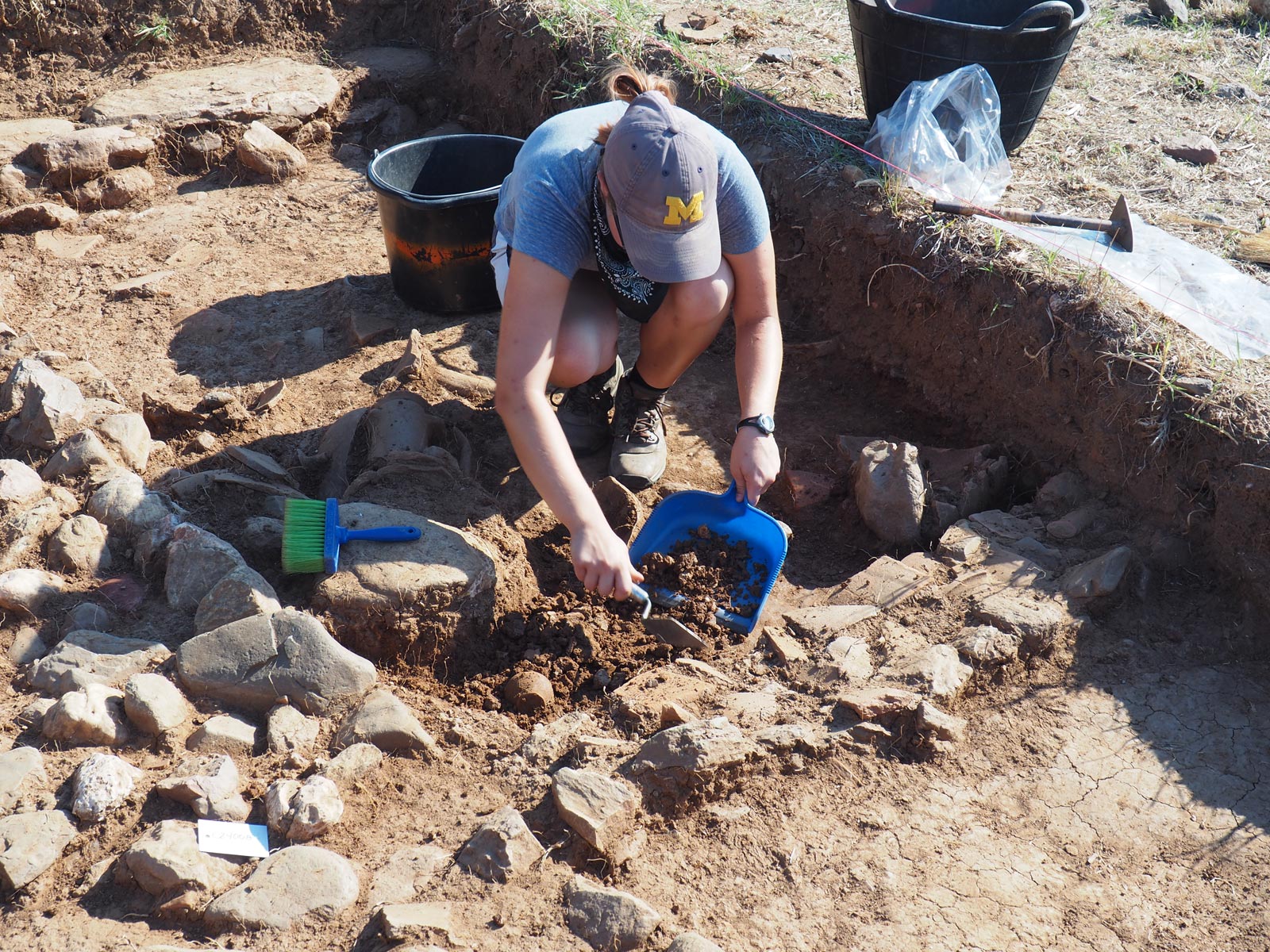Introduction
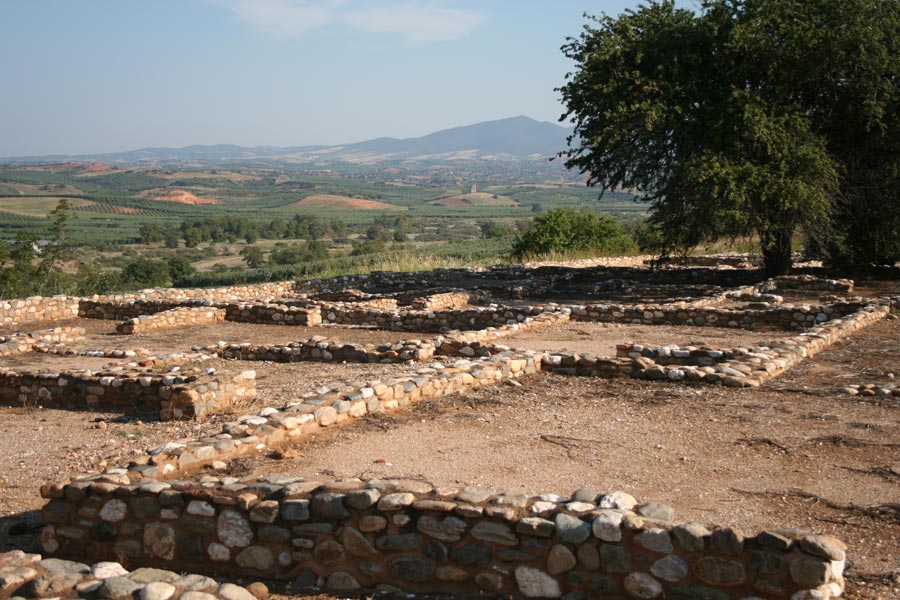
Olynthos (ol-INTH-os), in northern Greece, occupied two flat hills and spilled onto the agricultural land below. The city was partially excavated in the 1920s and ’30s and is well known for its regular grid plan and the nearly 100 houses uncovered there.
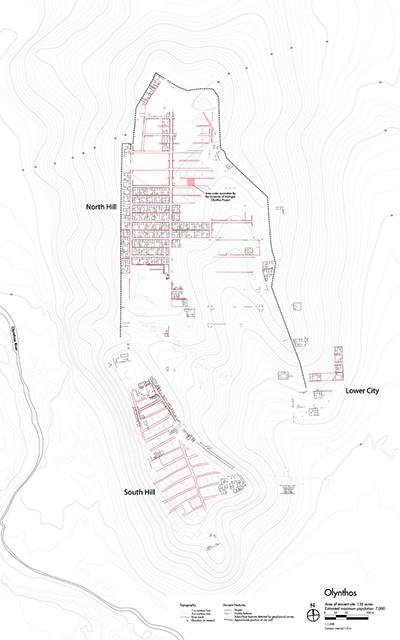
Interstate politics played a significant role in the history of Olynthos. The South Hill was settled in the later seventh century BC. Two hundred years later, Olynthos became the capital of the surrounding region, leading to expansion onto the North Hill. Then in 348 BC, according to ancient historical writings, Olynthos was destroyed after a siege and the city was never rebuilt. This was unusual in antiquity, when cities destroyed in warfare were quickly reoccupied. In the case of Olynthos, larger regional power dynamics were at play, especially the growth of the kingdom of Macedon under Kings Philip II and his son, Alexander the Great.

The sudden abandonment of Olynthos gives archaeologists a rare opportunity to explore an ancient town at a single moment in time. Since 2014, a new program of research at Olynthos has combined survey of the site and surrounding countryside with detailed excavation of one of the houses on the North Hill.










